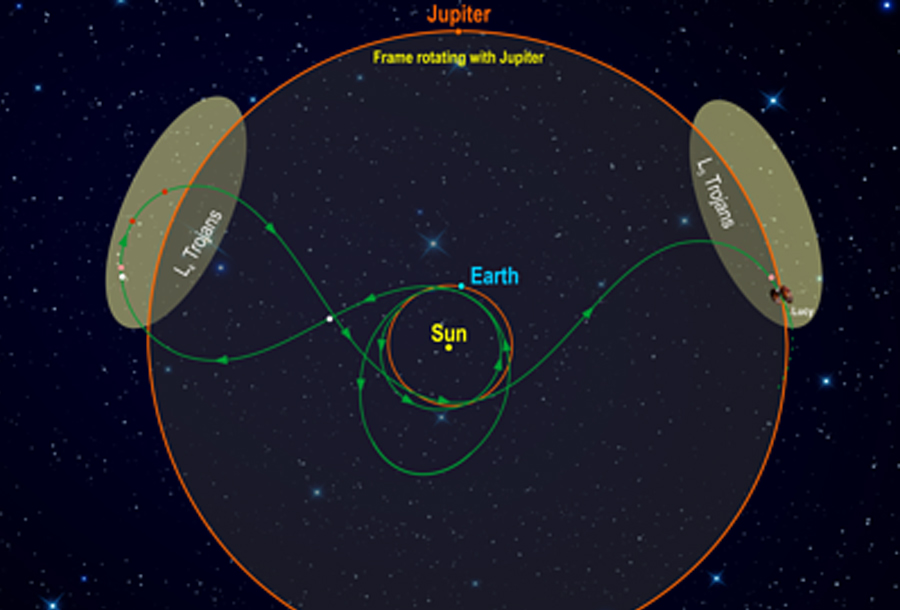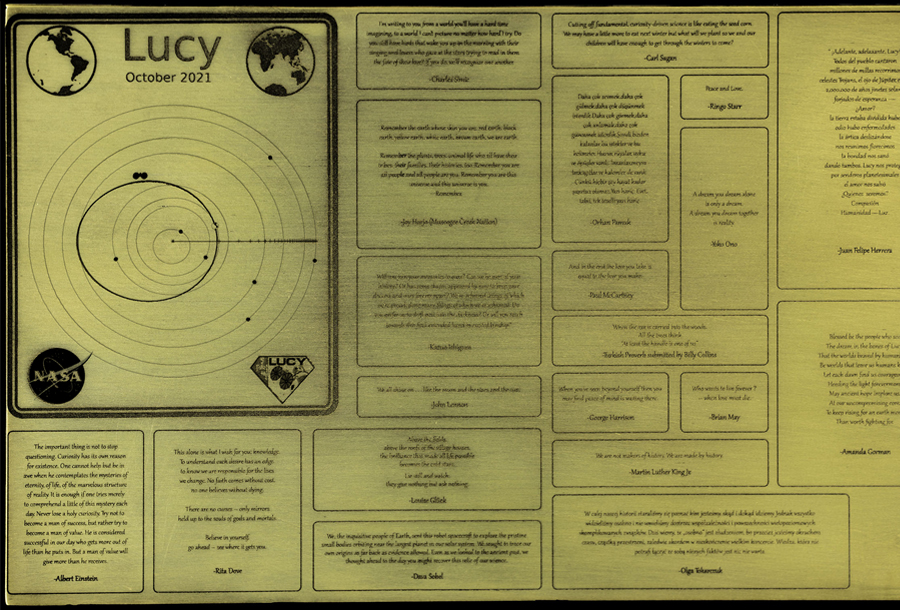NASA's Lucy mission embarks on a 12-year journey to explore the Trojan asteroids, two separate groups orbiting just beyond the planet, Jupiter. The Lucy spacecraft will study eight asteroids during the mission duration, which is the most asteroids for any singular spacecraft mission to date.
The question is often raised as to 'why do we explore our solar system?' What is the purpose, and what do we hope to learn from Lucy's mission to this unexplored area of our solar system? Scientists strive to uncover more about the beginnings and changes to the planets and our solar system with the long-term goal of becoming a multi-planetary species. Asteroids are literally the fossils of early planet formation. The Trojan asteroids offer a unique opportunity to study multiple bodies with varying characteristics. These asteroids range in color from grays to reds, indicating where they formed in relation to the Sun. Yet, they ended up grouped together in a mutual orbit over 530 million miles (853 million km) away from the Sun. The mission's principal investigators hope to learn more about how the planets were created and ended up in their positions within the solar system by examining each asteroid's surfaces, ages, and compositions.

As the first solar-powered spacecraft operating further from the Sun than any previous one, Lucy's solar panels are expansive. Once fully extended, the two solar panels, each nearly 24 feet (7.3 meters) in diameter, could cover a five-story building. The mission success will hinge on the proper deployment of the solar panels approximately one hour following launch. Once operational in space, the panels will generate up to 504 watts of electricity – equal to the necessary power for the washing machine you use.
The spacecraft and mission's name, Lucy, is for the fossilized skeleton of an early female hominid discovered in Ethiopia in 1974. The skeleton, in turn, was named Lucy when one of the expedition members sang The Beatles song, "Lucy in the Sky with Diamonds," in celebration of their find.
Keeping with the uniqueness of the Lucy mission overall, the spacecraft will carry a plaque as a time capsule for future descendents of Earth to discover. The plaque shows the mission date and position of the planets on its launch date. It also includes messages from various influencers, scientists, artists, poets, and activists from the present and recent past, including all four members of The Beatles. With Lucy predicted to stay in a stable orbit once the twelve-year mission is completed, this plaque may be a reminder of our times' thousands of years from now.

LEARN MORE




